Everyone is talking about leveraging AI in almost every step we make (yes, even breathing – literally). But what does it actually mean – beyond typing yet another prompt into ChatGPT4 or Midjourney? In particular, what do creative professionals like designers gain from it, aside from a bit of ideation boost?
Modern-day creative landscape extends far beyond traditional mood boards and sketch books, integrating Artificial Intelligence and other cutting-edge technologies into the field. The introduction of AI alone is far from just another passing trend, since it already represents a fundamental shift in how designers conceptualize, create, and share their works.
Digital revolution has been at the forefront of fashion as a field for years now, with AI being introduced into the very fabric of design processes around the world. It is now a comprehensive ecosystem of specialized tools made specifically to meet various demands of the fashion industry, operating beyond some of the more obvious applications of AI – like generative text and image platforms.
What’s true is that, these days there is an AI for everything – including fashion design. But rather than spending hours of your life taming Midjourney or bareback Stable Diffusion, it’s much more practical to explore specialised instruments tailored to the specific needs of the fashion industry.
Most modern designers do not think about whether to embrace these new technologies or not. The only question here is how to incorporate them in the most efficient manner possible without sacrificing creativity. There is still a lot of skepticism toward AI that mostly revolves around the possibility of eliminating the human touch in design altogether or homogenizing design processes as a whole. However, there is also a lot of curiosity about how these tools might be great for eliminating routine tasks while helping improve the original artistic vision instead of replacing it.
Truly valuable AI fashion tools can already address some of the existing pain points in the design workflow. Such solutions are tasked with solving complex challenges while reducing time investment that was previously necessary to perform the same processes.
Top Benefits of Using AI in Fashion Design
Integration of AI into fashion design workflows can provide an abundance of transformative advantages outside of mere fashion design automation. The AI-powered benefits manage to offer strategic advantages capable of fundamentally reshaping creative processes, customer experiences, and even entire business models.
The most noteworthy advantages of using AI in fashion design are:
Design and Prototyping Acceleration
AI can dramatically speed up the overall timeline from concept to visualization stage, making it possible to create dozens of iterations in minutes. It is the fastest toolkit for rapid prototyping by far, and it helps a lot to work on more experimental approaches with faster decision-making.
Accelerated Visualization for Internal Purposes
Another advantage that is worth noting is the AI-powered sketch-to-image technology that can transform rough sketches into photorealistic visualizations in a very short time frame, which dramatically accelerates the internal approval process while enabling real-time collaboration. Such capability can cut down entire days of manual rendering work, allowing creative teams to evaluate different design variations in the same meeting for faster concept-related decisions.
Personalization and Customization Improvements
Modern AI environments are capable of analyzing individual customer preferences (along with their body measurements) in order to create completely unique designs that are tailored to specific tastes and requirements of each potential client. Such a high degree of personalization creates deeper customer connections and reduces return rates at the same time.
Assistance in Data Analytics
Fashion brands can also leverage the power of AI to extract an abundance of meaningful insights from large masses of customer information, revealing patterns in purchasing behavior and style preferences that were previously unseen to the human eye. Analytical improvements alone are a great way to turn overwhelming amounts of unprocessed information into actionable business insights to improve practically everything from marketing strategies to design decisions.
More Emphasis on Sustainable Practices
Fabric waste can also be reduced to a certain degree using pattern-cutting efficiency and material selection based on environmental impact metrics. Both of these improvements are also provided by introducing AI into the field of fashion design. Additionally, higher precision of demand forecasting means brands would have a much easier time producing closer to actual demand instead of overproducing – another strong step toward more environmentally responsible fashion practices.
Streamlined Marketing Campaign Creation
AI tools make it a lot easier to create compelling visual content that also aligns with a company’s brand identity (Italian luxury brand Etro collaborating with digital artists to create AI-generated models with their brand aesthetic is only one example of many). A lot of these tools can also adapt designs to different marketing channels, simplifying the process of creating entire multifaceted marketing campaigns. The current quality of AI-produced materials is so high that even smaller brands can now create professional-grade marketing materials without having a massive creative team at hand.
Simple Creation of Virtual Try-ons
A combination of AI and VR made virtual fitting rooms a reality instead of fiction – accurately simulating how garments can drape on different body types, which substantially improves the online shopping experience. It is a technology that can bridge the crucial gap between physical trying-on and digital browsing, improving consumer confidence in online purchases and also reducing costly returns.
Top Challenges of Using AI in Fashion Design
While it is true that AI provides remarkable possibilities in terms of fashion design, it is also important to remember that its implementation comes with several important issues that brands must be aware of at all times. Understanding these challenges is very important for fashion professionals that want to integrate these powerful solutions into their existing workflows without disrupting creative integrity and business sustainability.
Concerns About Data Privacy and Security
Modern personalization algorithms powered by Artificial Intelligence need a lot of customer data to operate, raising a lot of important questions about regulatory compliance and privacy protection across global markets. Fashion brands would have to balance between the advantages of data-driven design and transparent policies that can safeguard consumer information. It is a delicate balance that requires flexibility, adaptability, and ongoing vigilance over the entire environment. There are certain companies in this field, like NewArc.ai, that are already looking into protecting customer data, including implementing compliance protocols such as SOC 2 Type II in order to evaluate how well an organization can manage and protect such sensitive information without disrupting its own capabilities.
AI-based Creative Limitations
Due to AI nature, all such systems learn from existing patterns and designs. As such, there is always potential for creating a homogenized aesthetic if a designer relies too heavily on AI-oriented capabilities. It is often seen as the most important challenge of AI-based software in fashion – balancing between computational efficiency and creative disruption possibility.
Integration Capabilities with Existing Workflows
The unconventional nature of many AI tools makes them difficult to integrate into existing design processes due to significant resources spent on retraining staff and restructuring existing creative methodologies. This creates a transition period of sorts, where a temporary decrease in productivity is expected as teams adapt to new approaches and interfaces. Then again, this period is also known for creating noticeable resistance among experienced designers that have mastery of their traditional methods and do not wish to change. Compliance is another consideration here due to the very nature of modern-day AI algorithms, which pushes businesses to consider implementing different compliance standards in order to avoid legal issues. A good example of such a standard is the aforementioned SOC 2 Type II, or Service Organization Control 2.
Substantial Investment Costs Up-Front
A financial barrier for adopting complex AI solutions remains substantial for most fashion companies, especially when it comes to smaller brands and independent designers. It is not just about immediate software expenses, either – a lot of hidden costs have to be accounted for, as well, such as system customization, data preparation, ongoing technical support, etc.
Common Use Cases for AI in Fashion
Practical applications for Artificial Intelligence in fashion extend across the entire lifecycle of a product, from initial concepts to consumer experiences. Our goal here is to show how AI has already reshaped the fundamentals of this industry instead of offering incremental improvements to existing processes.
- AI for Fashion Design and Sketching
Advanced generative algorithms can already transform rough sketches with text description into detailed product visualizations in a photorealistic quality in the matter of seconds. It is an impressive capability that allows designers to test concepts in a rapid manner, making refinements before investing in physical samples, which accelerates the creative process while reducing total cost of development.
- AI in Retail and E-commerce Personalization
Modern-day recommendation engines can analyze individual shopping behavior, as well as preferences and body measurements to create highly personalized product suggestions that almost feel like personal styling rather than artificial suggestion. Such a high degree of customization is more than the “you might also like” recommendations we all know, covering outfit creation and styling advice at the same time, improving conversion rates and customer satisfaction.
- AI for Trend Forecasting
Computer vision systems monitor social media platforms, runway shows, and street style photography on a constant basis in order to identify emerging visual patterns before they become mainstream trends. This way, brands can have a crucial competitive advantage since they can develop relevant products beforehand and get ahead of the competition this way.
- AI-powered Virtual Try-on Solutions
Augmented reality technologies already can account for the unique body shapes and measurements of each customer while also realistically simulating the way garments are supposed to drape and fit in real life. This kind of bridge between digital browsing and physical trying-on has become an important factor for online retailers that want to reduce return rates and improve customer confidence in digital purchases.
- AI in Supply Chain and Inventory Management
Predictive analytics engines can monitor global supply chains in real-time to anticipate disruptions and suggest alternative sources or production strategies. They can even optimize inventory levels across distribution networks in order to ensure that products are positioned closer to the locations where demand is the highest while minimizing the possibility of overstock/stockout.
Methodology for Picking the Best AI Tools for Fashion Design
A comprehensive assessment of AI fashion design tools that we want to provide aims to offer an abundance of practical insights that go beyond marketing claims. Below you’ll find the methodology and the description of criteria to assess AI tools that we use in the review below, offering a balanced evaluation of both real-world usability and technical capabilities of each platform in the context of the professional design industry. Each mini-review of each tool we evaluate here contains seven sections: general description, customer ratings, important features list, key advantages, noteworthy shortcomings, current pricing, and personal opinion.
General Description
Each tool evaluated below has a detailed explanation of its core functionality, along with the design challenges it addresses and target audiences it aims for. We attempt to examine the underlying technology that powers each solution, with the AI models involved, and the way they integrate with standard design workflows in order to deliver practical benefits beyond novelty.
Customer Ratings
Customer ratings are, in general, a great source of customer information about specific software’s general capabilities, as well as their features and disadvantages. There are many different websites on the Internet acting as review aggregator platforms that we use to find any relevant information on the topic of each software. We add the section with customer ratings only for those tools and services that have already been established and have sufficient amount of users willing to leave public reviews about their experiences.
Important Features
The feature analysis section highlights the most noteworthy capabilities of each solution, clarifying what exactly designers may expect when implementing them. Our systematic approach highlights both fundamental and advanced features that can differentiate the tool from its alternatives, highlighting fashion-specific features over generic AI-centric capabilities.
Key Advantages
Important advantages of each solution highlight its benefits to fashion professionals. We attempt to prioritize advantages that can address genuine pain points in the design process, focusing on showing how each tool can measurably improve workflow efficiency or design outcome.
Noteworthy Shortcomings
There is no perfect technology solution on this market, and we provide our assessment while also keeping the constraints of the products we review in mind. . We attempt to address the limitations, learning curves, and potential frustrations designers can encounter while using each of these tools. That way, we can help professionals with making informed decisions about what kind of workflows and processes a specific solution works best with.
Current Pricing
Up-to-date information about cost structures, subscription tiers, and available free trials helps designers see the value proposition of each solution in different business environments, from independent designers to established fashion houses to determine whether the initial investment can align with the expected returns from it.
Personal Opinion
Our evaluation of each solution concludes with expert analysis, providing an informed perspective on which specific design scenarios each solution excels in. That way, readers would have an easier time matching solutions to their particular needs while also highlighting the unique approaches or features that set each tool apart in the AI fashion landscape that gets increasingly crowded as time goes on.
Top 9 AI Tools for Fashion Designers in 2025
Here are a few AI fashion design tools that are likely to accelerate your creative processes and speed them up – so you don’t have to waste your precious time on tedious, boring routine.
Khroma – Best for color palette development and harmony optimization
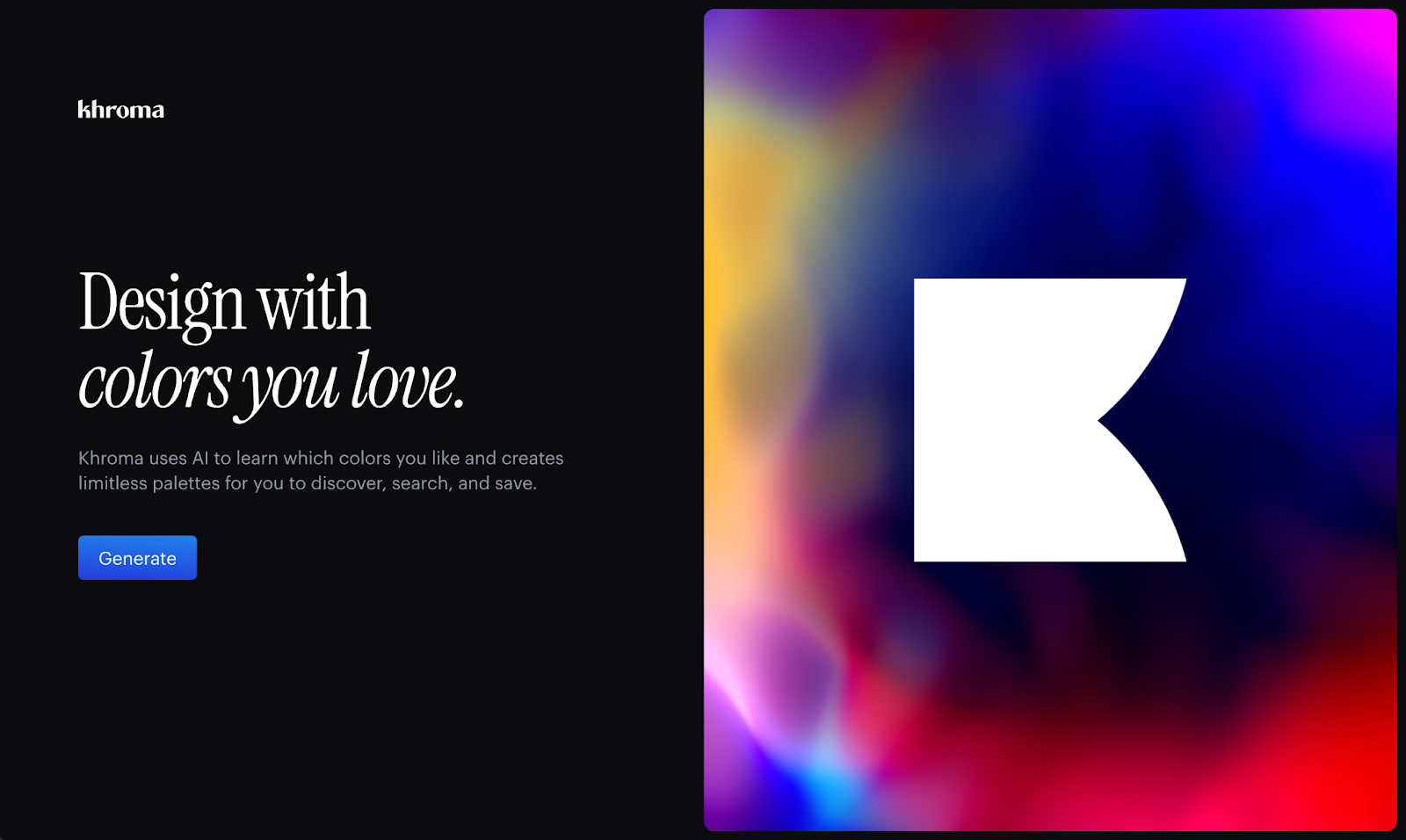
Khroma is an AI-powered tool for exploring color combinations and palettes. The platform leverages personalized algorithms to learn your color preferences, enabling the generation of limitless palettes based on your specific tastes. Intuitive and still free to use (check it out while it’s in beta version!), Khroma is an ideal tool to get you started on planning your new collection or a statement piece.
Customer Ratings:
- Product Hunt – 4.6/5 points based on 17 user reviews
Features:
- Khroma allows designers to quickly find and save color combinations that work best, with the ability to tailor its color suggestions to match individual tastes.
- Users can filter the color generator by hue, tint, value, and other parameters, allowing for precise control over the color selection process to meet specific design requirements.
- Khroma offers detailed information for each color pair, including color names, hex codes, RGB values, CSS codes, and WCAG accessibility ratings, ensuring designers have all the necessary details at their fingertips.
Advantages:
- Eliminates hours of manual color experimentation through algorithmic generation of harmonious combinations.
- Requires no coding or technical knowledge to operate in an efficient manner.
- Uses a highly personalized approach with color recommendations that can genuinely align with a designer’s artistic vision instead of working with nothing but generic suggestions.
Shortcomings:
- It is not uncommon for the web-based system to struggle with industry-specific color needs due to textile dye limitations.
- Specialized focus on color means that Khroma lacks most capabilities in other aspects of fashion design – textile selection, pattern-making, etc.
- Integration capabilities with other software in the field of fashion design is very limited, creating potential workflow disruptions.
Pricing:
- The free basic version has no limitations when it comes to palette generation but is generally bare-bones otherwise.
- The current system is in beta stage and there is no indication of a premium subscription anywhere in the solution.
Personal Opinion of the Author:
Khroma stands out a lot in comparison with general color tools due to its complex machine learning engine that can operate as a completely personalized color assistant capable of evolving after each interaction. The platform combines algorithmic precision with creative intuition, making it work as a color collaborator of sorts, bridging the gap between intuitive design sensibilities and technical color theory.
NewArc.ai – Best for digital fashion and quick sketch-to-image prototyping
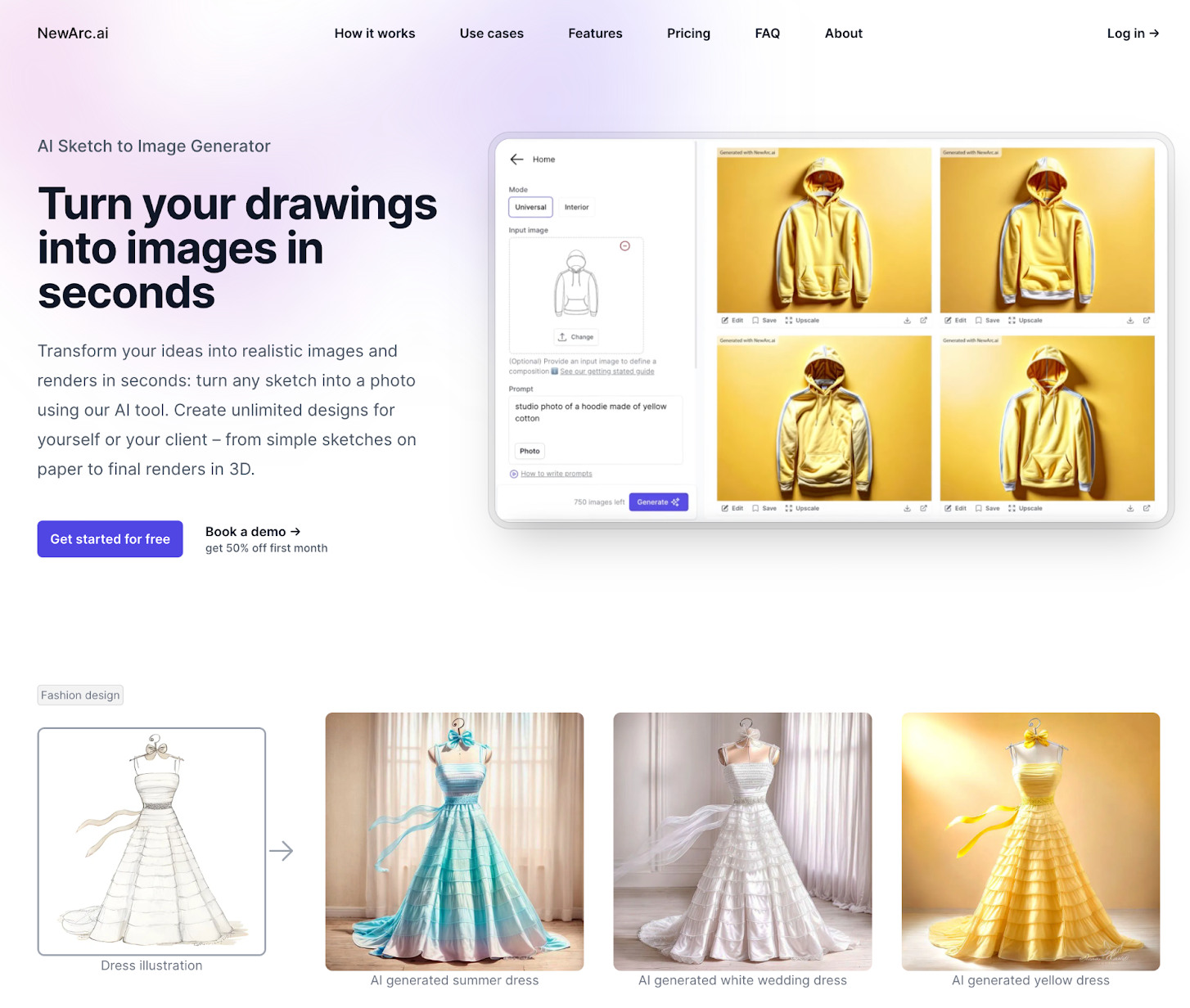
NewArc.ai is the go-to tool for instant sketch-to-image generation and visual prototyping for apparel, footwear, and accessories designers. With this platform, you can upload your sketch and get photorealistic visuals of your product in 10 seconds.
Gone are the days when you had to spend hours meticulously redrawing your concepts in Photoshop, Procreate, or other advanced designer software solutions: now you can click a button and instantly see a photorealistic visualisation of your ideas. The platform creates high-quality design concepts from simple inputs like line drawings, hand sketches, collages, or photographs.
Features:
- Quickly transforms sketches into photorealistic visuals.
- Allows users to experiment with different colors, materials, and creative variations. You can even choose how creative you want AI to be, or what you’d rather avoid (especially if you’ve got specific colours or fabrics that you dislike).
- Fine-tune your favourite AI-generated design until you get the exact concept you envision.
Advantages:
- An easy-to-use service that doesn’t require hours of training to learn how to use it.
- Rapid sketch-to-image generation capabilities based on Artificial Intelligence.
- Ability to perform the image-to-sketch conversion to generate images for tech packs.
- Control the image generation process using material reference images, such as material swatches, photos of other products, and inspirational images.
- Adding specific patterns to a generated product, whether floral or abstract graphics, or anything else.
- Developing colorways for a generated product, which is essential for adapting a single design to various seasons, trends, or collections.
Shortcomings:
- Substantial focus on visual prototyping capabilities for design validation means that NewArc does not have its own 3D-modeling capabilities yet the same way certain legacy old-school solutions do.
- Current inability to present a complete 360 degree overview of a design in three dimensions.
- Sketch-to-image is the only method for generating images.
Pricing:
- The basic free tier offers a limited feature set and up to 10 free generations per month (with watermarks) after creating an account.
- There are three paid plans to choose from: Basic, Pro, and Enterprise.
- Basic plan costs $19 per month ($9 per month if paid annually) and offers the standard feature set of the solution – sketch-to-image capabilities with full privacy and no watermarks.
- Pro plan starts at $39 per month ($19 per month if paid annually) for a single user, removing the limit on the number of generations while also introducing image editing, material references, small team management , and so on.
- Enterprise tier does not have any public pricing, but its capabilities are still public – with the full feature set of the previous tier, along with custom onboarding, priority support, custom MSA and SLA, SOC 2 Type II security certification, and more.
Personal Opinion of the Author:
NewArc.ai is a simple to use service that sets itself apart with its unprecedented sketch-to-image generation capabilities, generating realistic images in a matter of seconds. This AI-assisted approach makes design iteration and brainstorming a lot faster and more intuitive, and may even have the capacity to replace a traditional 3D modeling software in the coming years. Additionally, such ability to generate images in a quick manner simplifies stakeholder presentations, making it easier to communicate your ideas before moving on with specific concepts toward complex 3D visualization and further production.
Zmo.ai – Best for diverse model imagery and virtual try-ons without additional photoshoots
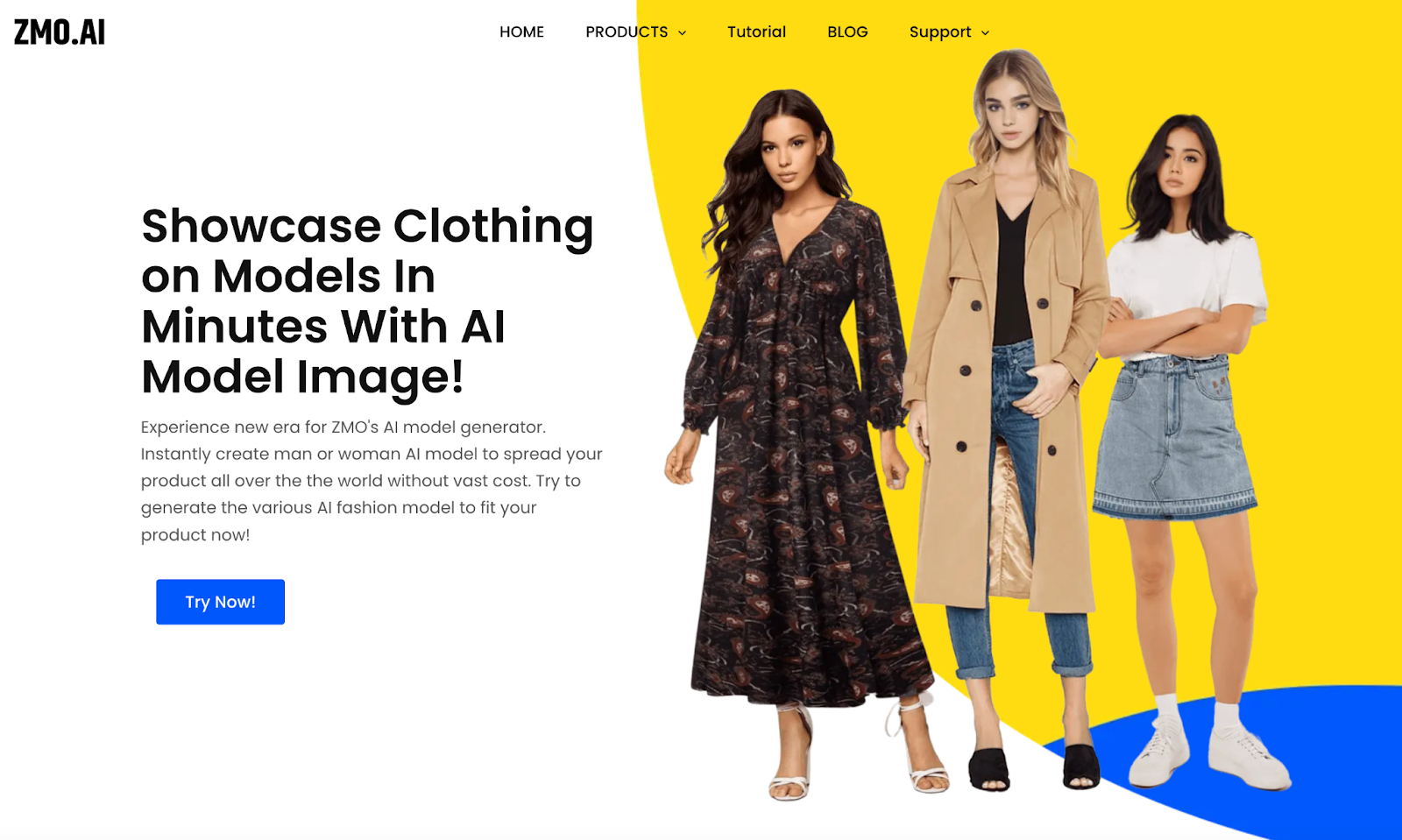
Next on the list is Zmo.ai, a great asset for fashion marketers and designers who dread the logistics and costs of arranging photo shoots. This platform utilises AI to generate high-quality, realistic images featuring models showcasing your designs. All you have to do is to upload the visuals of your designs – that’ll be enough for ZMO.ai to produce professional images tailored for your upcoming campaigns or portfolios. This tool not only saves time but also reduces costs typically associated with traditional photography, such as photographer fees and studio expenses. Perfect for small indie brands and startups looking to elevate their visual content at low to no cost.
Customer Ratings:
- Product Hunt – 4.6/5 points based on 42 user reviews
- G2 – 4.2/5 points based on 25 user reviews
Features:
- Creates lifelike images of models wearing your designs using advanced AI technology.
- Zmo.ai can generate ethnically diverse digital models – perfect for brands targeting different demographics and markets.
- There is also an array of AI tools for editing your images, such as background remover, photo editor, and a few more.
Advantages:
- Ability to experiment with different styling combinations and presentations without acquiring any physical inventory or even samples.
- Rapid prototyping capabilities reduce the time between concept and visualization stages, which accelerates the design feedback loop.
- Bulk creation features can save a lot of time and resources that would be spent on traditional photo shoots otherwise.
Shortcomings:
- Some complex garment structures or unusual fabric properties can be represented in an odd manner, with the system struggling to maintain its accuracy.
- Generated images often lack the photographic details and natural fabric behavior that professional photography can capture.
- Certain inconsistencies in lighting and shadow effects across different generated images are expected in some collections.
Pricing:
- Zmo.ai operates on a credit-based system and offers 30 credits for registering.
- After that, users can subscribe to one of the three primary pricing plans: Starter, Pro, and Boss.
- Starter costs $15 per month, removes the daily limit on generations and provides 300 credits per month with certain limitations.
- Pro is $29.9 per month, gives 3,000 credits every month, and improves the quality of generated images.
- Boss is $59.9 a month, offers unlimited credits, all premium filters, aspect ratios, and many advanced features to choose from.
Personal Opinion of the Author:
Zmo.ai offers a unified solution for virtual clothing visualization and model generation, eliminating the need for separate services. Such integration can help create a seamless workflow from design to presentation – an approach that is very convenient in this industry. It also helps democratize access to professional-quality fashion visuals and diverse model representation that was only previously available to some of the biggest brands with substantial budgets.
Heuritech – Best for data-driven trend forecasting to reduce the risk of collection planning
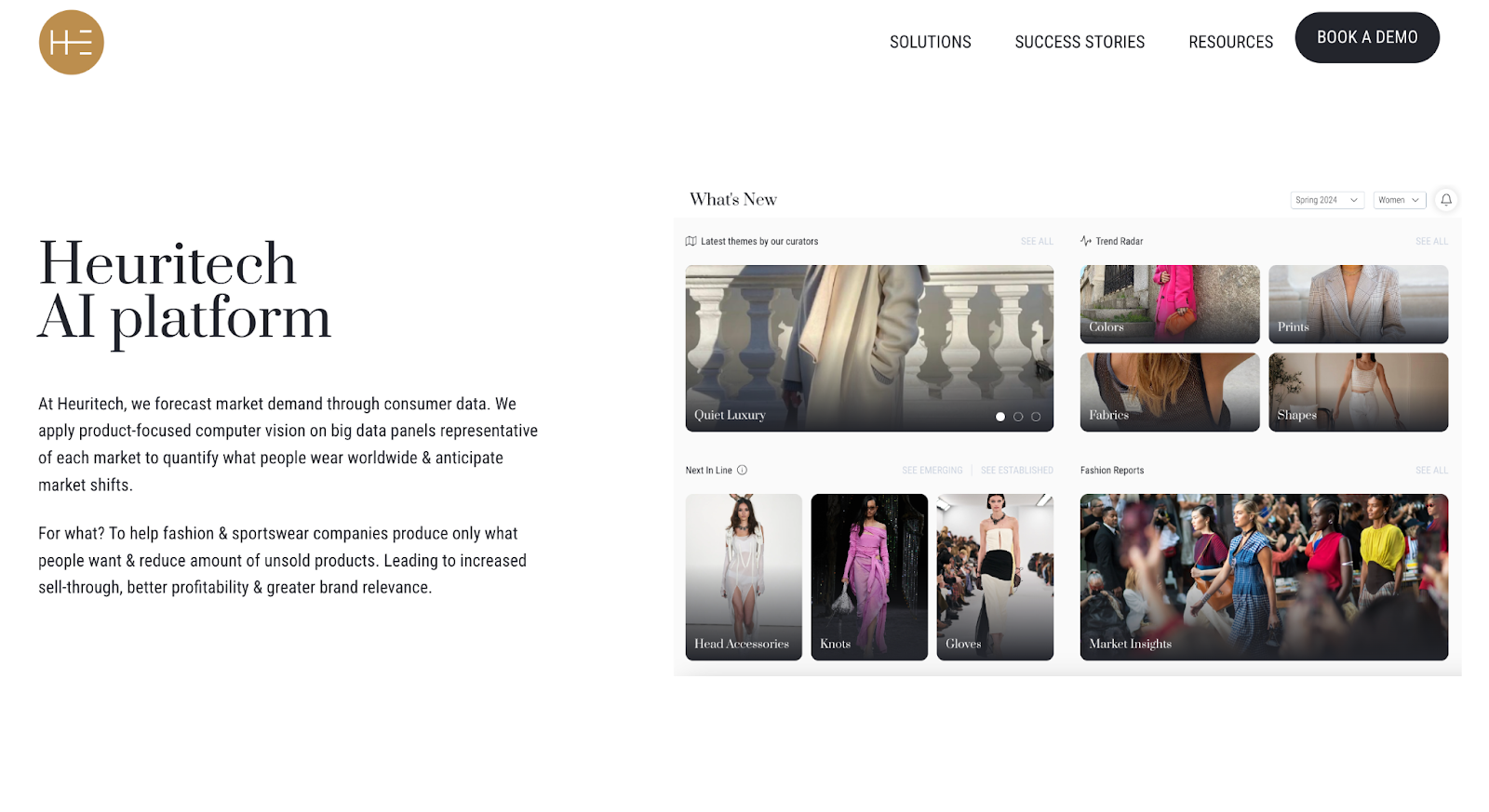
Imagine being able to predict next season's hot trends based on real-time data analytics – that's what Heuritech offers: it’s your main ally trend forecasting. Utilizing AI to scan millions of images across social media, it identifies emerging trends before they hit the mainstream. This tool is practical for designers who want to ensure their concepts are always ahead of the fashion curve. For creative professionals keen on being trendsetters rather than followers, Heuritech provides a clear window into the evolving preferences and styles that define the pulse of fashion.
Features:
- The software provides AI-powered predictive analytics to forecast upcoming fashion trends with precision.
- Supports sustainable practices by offering data-driven recommendations for eco-friendly production and design choices.
- Facilitates team collaboration by providing a platform for sharing insights, trends, and analysis within the organization.
Advantages:
- Data-driven trend forecasting can help reduce subjective bias in design direction and collection planning decisions.
- Region-specific trend analysis helps brands tailor each collection to specific geographic markets with high precision.
- The risk of collection planning is drastically reduced by offering quantifiable trend probability metrics to work off of.
Shortcomings:
- Sometimes the system can struggle when it comes to distinguishing temporary social media phenomena from genuine emerging trends.
- Premium pricing structure puts Heuritech outside of the reach of most independent designers and smart fashion brands.
- Limited social representations of some niche or avant-garde fashion may lead to them not being registered accurately.
Pricing:
- Heuritech’s pricing operates within three primary licensing options: Essential, Business, and Enterprise.
- Essential starts from €12,000 per year, mostly suited for smaller brands and designers looking to get consumer insights from a data-driven mindset.
- Business is more for medium-sized brands and manufacturers, starting from €35,000 per year and expanding the previous feature set with API access, an abundance of available add-ons, onboarding sessions, technical support, etc.
- Enterprise is the most feature-rich option with no official pricing, it is suited for up to 100 users at once and is tailored to each company’s specific needs and markets, along with many new features.
Personal Opinion of the Author:
The unprecedented scale of visual data analysis is what sets Heuritech apart from traditional trend forecasting services, dramatically reducing the influence of subjective interpretation and human curation. Several proprietary algorithms of the solution can detect subtle pattern shifts a long time before they become apparent to any human eye. Heuritech also relies a lot more on pattern recognition instead of data aggregation, making it genuinely magical when it comes to predicting future movements on the market, making it easier to learn about the upcoming fashion trends early on.
Clo3D – Good for accurate 3D garment visualization with manufacturing integration
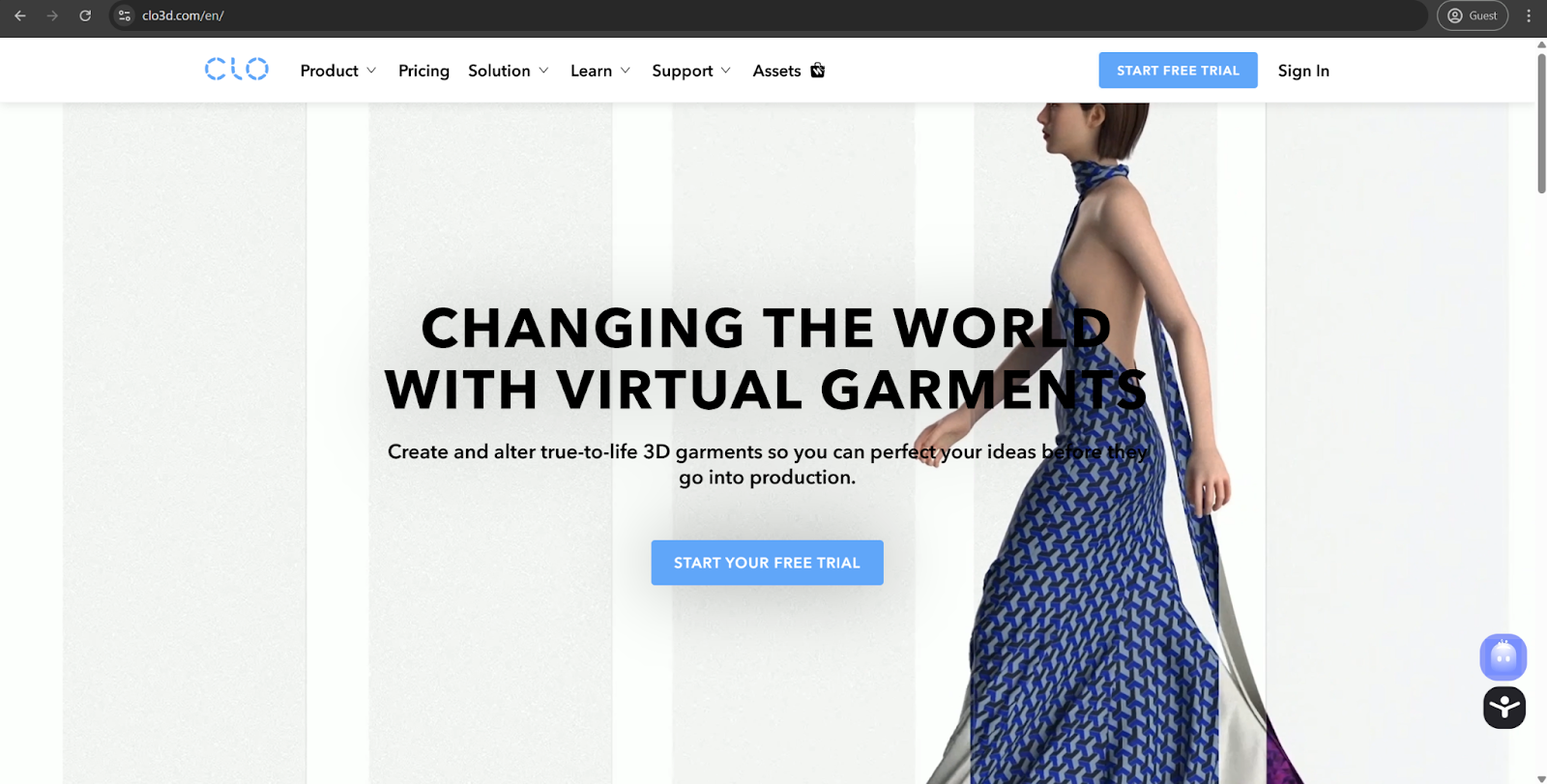
Clo3D is a professional platform for 3D garment design and simulation, incorporating various AI technologies in order to improve the process of creating digital fashion items. The software in question can be used by designers to create, modify, and visualize fashion items in 3D with remarkable physical accuracy. It combines traditional design tools and advanced AI-assisted capabilities in order to bridge the gap between physical production and digital conception.
Customer Ratings:
- G2 – 4.8/5 points based on 6 user reviews
Features:
- Utilizes the realistic fabric simulation engine capable of reproducing the physical properties of various textiles – with their drape, stretch, and weight.
- Offers AI-assisted draping and fitting capabilities, predicting the way fabrica will interact with various body types.
- Has strong rendering capabilities to create photorealistic visualizations of finished garments (for presentation purposes).
Advantages:
- 3D visualization helps improve communication between designers, clients, and production team members.
- Capability to visualize and resolve potential issues before starting to work with any physical materials.
- Provides a high degree of accuracy when it comes to fabric physics, reducing the need for physical samples during the development.
Shortcomings:
- Substantial learning curve results in a long time before an average user can use Clo3D to its full range of features.
- Most of the focus in the platform is on accurate simulation of existing concepts instead of creating new ones with the help of AI.
- Certain textile effects that are highly specialized cannot offer the same degree of accuracy as the rest of the effect range.
Pricing:
- The solution is available from $50 per month without tax ($25 for students) with standard feature sets.
- There are also separate licensing tiers for Enterprise and Academic purposes with no public pricing available, offering improved feature sets and a higher level of customer support.
Personal Opinion of the Author:
Unlike a lot of the tools on this list that could be considered purely creative, Clo3D uses a somewhat different approach – a combination of physical production reality with digital design. It is practically unparalleled when it comes to the accuracy of fabric simulation, setting it apart from most competitors. Its physics engine can easily predict the way each material would behave in a real world, making Clo3D uniquely valuable for designers that have to balance manufacturing feasibility and creative vision in the same tool. The solution operates as an important part of digital transformation in the industry, showcasing a fully virtual design process that still remains grounded in physical reality. There’s also the fact that Clo3D has been on the market for multiple years before the wave of popularity for AI-assisted solutions, and yet it still remains relevant and effective in its field of expertise.
Revery.AI – Best for reducing e-commerce return rates through virtual try-ons
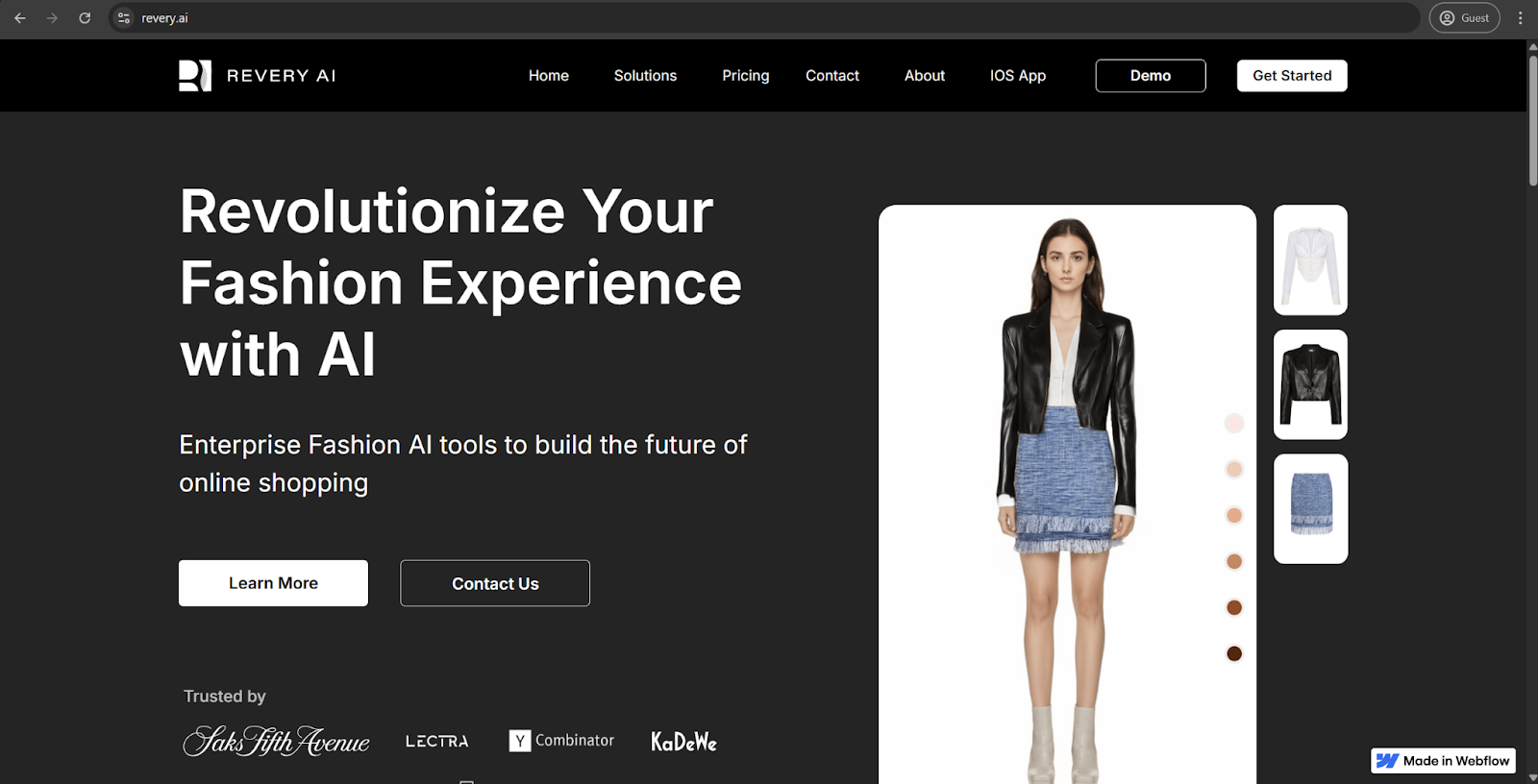
Revery.ai specializes in a virtual try-on technology, allowing fashion consumers to visualize clothing on models that closely resemble themselves or match their body type. A complex combination of image processing and machine learning is used to accurately render garments on different models. The primary focus of Revery.ai is to enhance the end user shopping experience instead of the initial design process.
Features:
- Advanced virtual try-on capabilities can render clothing items in a realistic fashion, including different body types and positions.
- AI-powered size recommendation tools can be used to suggest the best fit for each customer based on their garment specifications and customer measurements.
- Consistent product visualization is generated across multiple items in order to create a cohesive shopping experience.
Advantages:
- The platform can significantly improve customer confidence in online purchases by eliminating a lot of the uncertainty around appearance and fit of each clothing item.
- Brands have a much easier time demonstrating size inclusivity by showing the way garments appear on different body types.
- Virtual try-on capabilities reduce return rates in a significant manner by giving customers much more accurate expectations of how garments would look on them.
Shortcomings:
- Most of the platform’s capabilities are customer-facing, which limits its utility in the actual fashion creation process.
- Certain complex materials and garment details might not render with the same 100% accuracy as everything else.
- High-quality product images are necessary in order to create convincing results for a virtual try-on.
Pricing:
- Revery.ai uses a very simple subscription-based licensing model.
- The Starter plan is free, it includes up to 100 virtual try-ons and up to 10 garments.
- The Enterprise plan does not have any public pricing data, but it does remove all limitations on try-on images and garments, while disabling watermarks and adding an abundance of other capabilities.
Personal Opinion of the Author:
Revery.ai focuses exclusively on the customer side of the design experience instead of the design process itself, which makes it differ from a lot of its competitors. A lot of these competitors help designers create fashion, while Revery is more about selling it using revolutionary visualization capabilities. It manages to address one of the most prevalent issues of e-commerce – the inability to try garments before purchasing. Its solution can scale across thousands of products without the necessity to perform some sort of special photography process, either. A customer-centric approach like that complements other AI tools focused on design by ensuring that each creative decision is communicated to potential customers as clearly as possible.
StyleScan – Best for transforming single product photos into diverse marketing assets
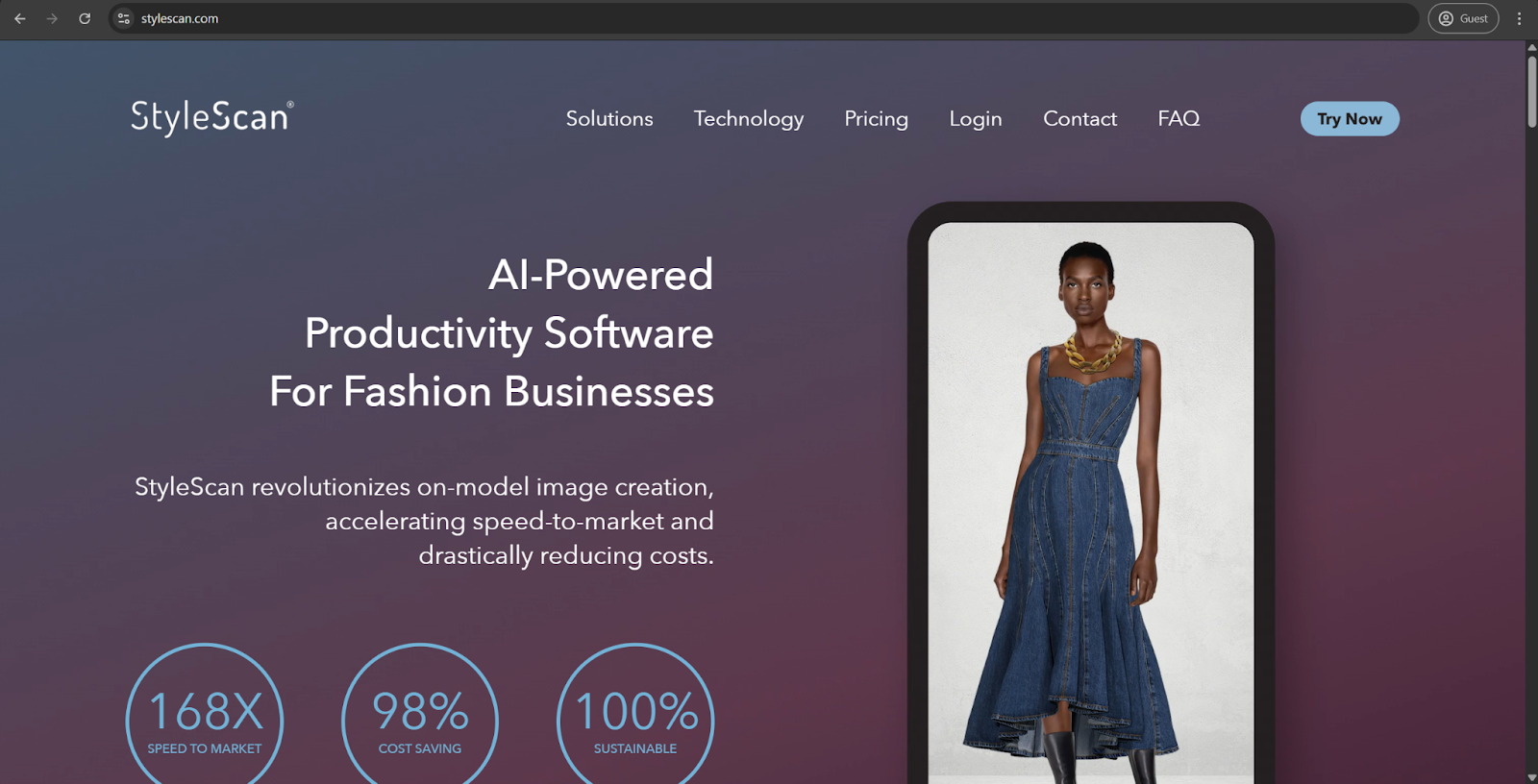
StyleScan is an innovative AI platform capable of transforming standard 2D fashion photography into dynamic 3D visuals with different poses, models, and backgrounds. It allows brands to maximize the amount of imagery around the existing product line, generating diverse presentation options without the necessity of additional photography sessions. StyleScan manages to bridge the gap between the needs of a modern digital market and traditional product photography with the help of generative AI.
Features:
- There are hundreds of pose variations to choose from, showcasing garments in various usage scenarios and contexts.
- An extensive library of diverse virtual models serves as a representation for various ethnicities, ages, body types, and style aesthetics.
- Batch processing capabilities of the solution can help transform entire product lines into expanded libraries of visual assets.
Advantages:
- Simplified e-commerce integration with standardized image outputs that can be compared with major online retail platforms.
- Dramatic reduction in photography costs by generating dozens of marketing visuals using a single product image as a source.
- Ability to maintain visual consistency across massive product catalogs even when photography’s sources and time periods differ from one another.
Shortcomings:
- Highly distinctive garment styles or unusual product techniques might not render correctly with all the adjustments.
- Final image quality depends directly on the resolution and lighting of the source image.
- Design creation capabilities of the solution are limited since it operates as a visualization tool first and foremost.
Pricing:
- StyleScan uses a somewhat basic subscription-centric licensing model that starts with the Starter plan – which costs $1 (for new users) and increases the cost to $29 per month after the first month has passed.
- This plan has a competent feature set already, with image exporting capabilities, model uploading, access to model database, and more.
- Power User costs $99 per user per month, offering an expanded feature set with a higher limit on the number of image exports (up to 300 per month now).
- Super User costs $199 per user per month, the same as the previous option but with another increase in image exports per month (up to 1,000).
- Enterprise costs $399 per user per month, cited as the best option for large enterprises, offering custom numbers of image exports that can carry over to the next month (all previous plans did not have that option), along with custom feature creation capability.
Personal Opinion of the Author:
StyleScan uses a unique approach to product visualization by attempting to maximize return on existing visual assets instead of creating new designs, which sets it apart from many existing design tools. The platform specializes in transforming standard sets of product photography into diverse and varied marketing assets in order to address a somewhat problematic pain point for many fashion brands – the necessity for varied visual content across multiple channels. StyleScan is specifically optimized for fashion representation, with its algorithms trained on fit variation, clothing behavior, and style-appropriate posing – which is one of the biggest advantages of the solution when compared with general 3D visualization tools.
Style 3D – Best for integrated 3D design capabilities that help streamline fashion design processes
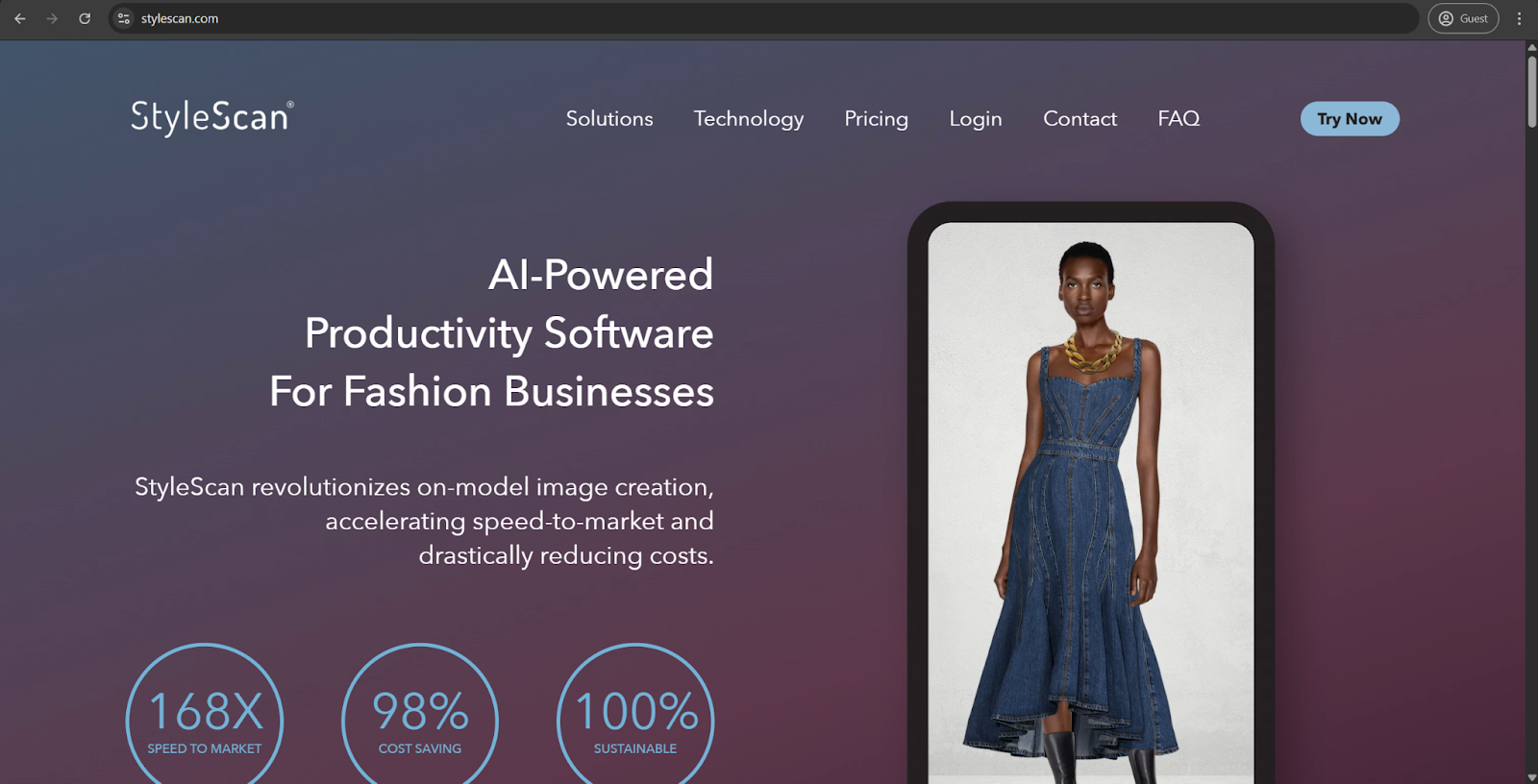
Style 3D is a multifaceted fashion design platform with AI capabilities for workflow optimization, texture generation, and visualization. It can offer end-to-end digital fashion creation tools from initial concepts through final presentation and even marketing afterwards. Style 3D manages to integrate several useful technologies into the same versatile platform, creating a cohesive ecosystem to operate in an increasingly digital fashion design process.
Features:
- Comprehensive digital asset library management capabilities, with a variety of materials, components, and previous design elements for efficient reuse.
- Versatile 3D design capabilities with intuitive tools for creating complex garments without the prerequisite of extensive technical knowledge.
- Convenient AI texture generation tool capable of creating realistic fabric appearances based on regular text-based inputs.
Advantages:
- High efficiency in digital fashion creation in various virtual environments, be it gaming, metaverse, etc.
- Rapid iteration capabilities by choosing between multiple design variations in order to refine concepts before committing to production.
- End-to-end digital workflows can eliminate a lot of the translation steps between different physical processes and software platforms.
Shortcomings:
- General complexity of the interface requires a certain level of time investment before the solution can be used to its fullest.
- Certain traditional design techniques do not translate seamlessly into digital workflows without a long process of adaptation.
- Style 3D’s comprehensive feature set often feels overwhelming for designers that aim to find more focused or specialized tools.
Pricing:
- Style 3D begins its journey with a client through a 30-day trial that offers all features with no restrictions outside of the time frame.
- Afterwards, users are switched to the Free plan, which is not time-restricted but missing a lot of the advanced capabilities of the software.
- Once that is done, users are free to subscribe to the Individual plan for $40 a month, unlocking most of the features unavailable in the Free version.
- The alternative here is to choose the Enterprise plan with no public pricing information that is described as “best for fashion companies, including brands, suppliers, and studios.”
Personal Opinion of the Author:
The ecosystem approach is one of the stronger points of Style 3D, integrating the entire digital fashion workflow in the same platform. It offers comprehensive coverage from early concepts to virtual showcases without the necessity to switch between different software solutions mid-way. That way, a unique digital thread is created, maintaining design integrity throughout the entire development process. There is also the fact that Style 3D has been a respectable and established player on the design and fashion market long before the AI-related popularity surge, yet they managed to adapt their processes to remain relevant. Digital fashion creation capabilities of the solution position it as one of the better options for digital fashion’s expansion into gaming and metaverse applications where the constraints of physical products do not apply anymore.
Browzwear – Best for enterprise-grade design solutions for global manufacturing integration
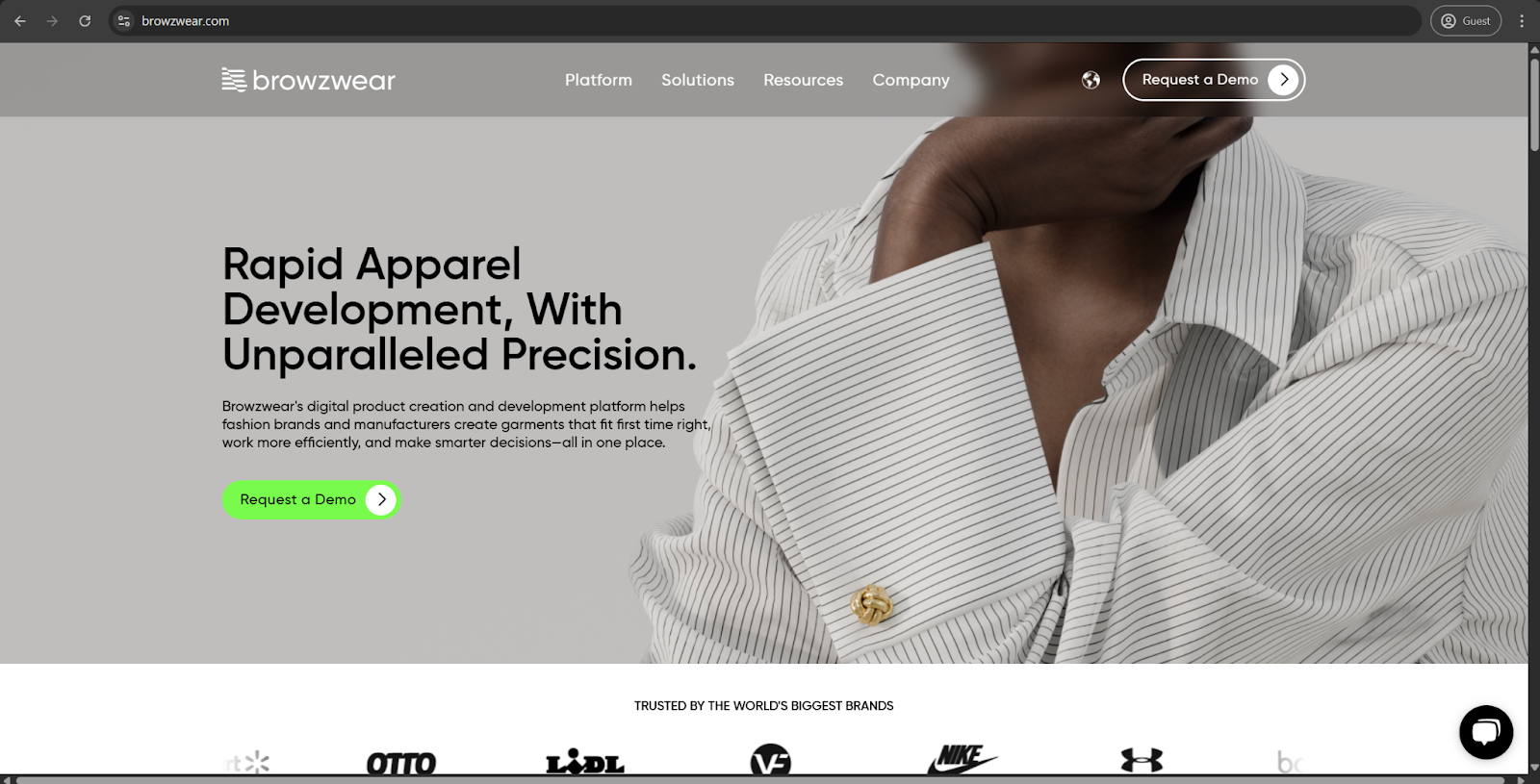
Browzwear manages to combine complex 3D design capabilities with AI-focused capabilities that offer fit validation and realistic garment visualization. It enables fashion designers to create, validate, and communicate various concepts entirely in a digital environment before starting physical production. Browzwear can serve as a comprehensive digital fashion development environment with a lot of emphasis on manufacturing integration and technical accuracy.
Features:
- Seamless integration between 3D designs and 2D patterns that are required to conduct physical manufacturing processes.
- Specialized simulation capabilities for different construction techniques and fabric types.
- AI-assisted fit validation capable of identifying potential issues across different movements or body types.
Advantages:
- Support for sustainable practices through the reduction of material waste associated with fit trials and physical sampling.
- Widespread industry adoption that ensures compatibility in patterns throughout the entire global supply chain.
- Easy identification and resolution for potential manufacturing issues before they can become expensive production problems.
Shortcomings:
- Significant investment requirements in licensing and training prevent smaller businesses from using the solution.
- Comprehensive nature of the software implies the necessity for significant training for proficient use – despite the abundance of AI-assisted features.
- Certain conceptual or highly artistic design approaches might feel somewhat constrained by the production-oriented nature of the platform.
Pricing:
- Browzwear does not have any public pricing information available on its official website.
- The only way to receive such information seems to include a direct communication with the company itself for a guided demo or a personalized quote.
Personal Opinion of the Author:
Browzwear has integration with established fashion production pipelines, which is often considered to be one of its prime advantages. Unlike a lot of the newer AI-focused tools, this solution has been on the market for decades now, building industry trust as time goes on. Such a strong legacy offers a unique combination of innovative technology and good understanding of production realities. Browzwear is also good at balancing technical precision with creative capabilities, bridging the gap between manufacturing requirements and artistic vision in the way that purely generative AI tools would not be able to match for now.
Direct Comparison of Top AI Design Tools
In order to highlight the abundance of options to choose from on this software market, we have also created a comparison table that highlights different aspects of each solution:
Learn From Top Brands Using AI
Still unsure if a true designer should use AI? Here are a few cases of top global brands using AI in designing their collections for your inspiration:
Collina Strada: Hillary Taymour used AI for Spring 2024 to create runway sculptures, clothing patterns, and prints.
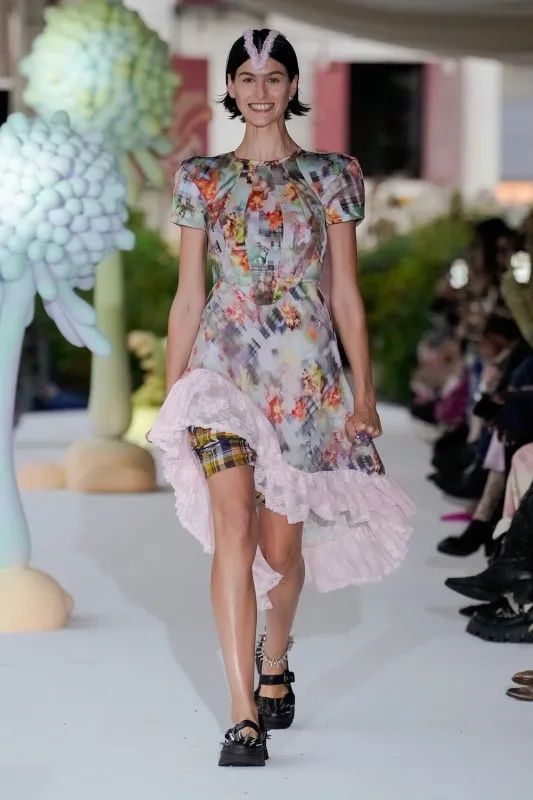
Bach Mai and Monse utilized AI to develop prints in their Fall 2024 collections.
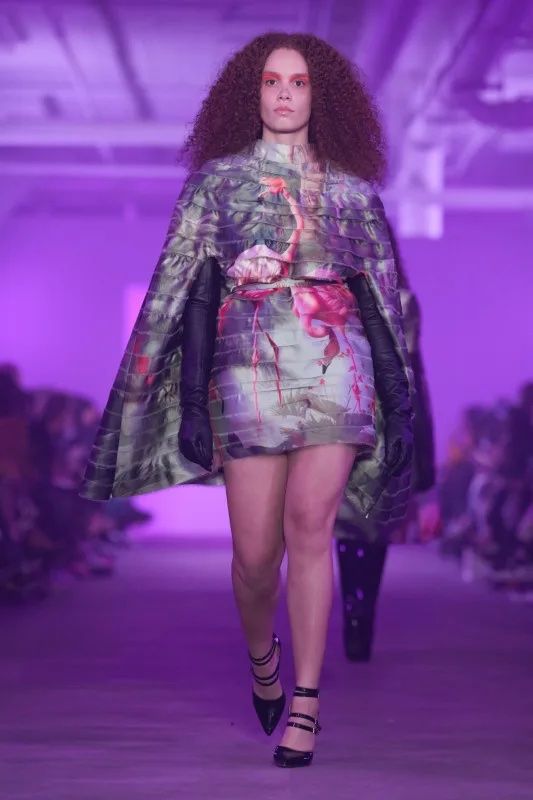
Valentino introduced an AI-powered campaign called 'Essential' in January 2024, creating images through a generative text-to-image system (doesn’t it remind you of NewArc.ai?)
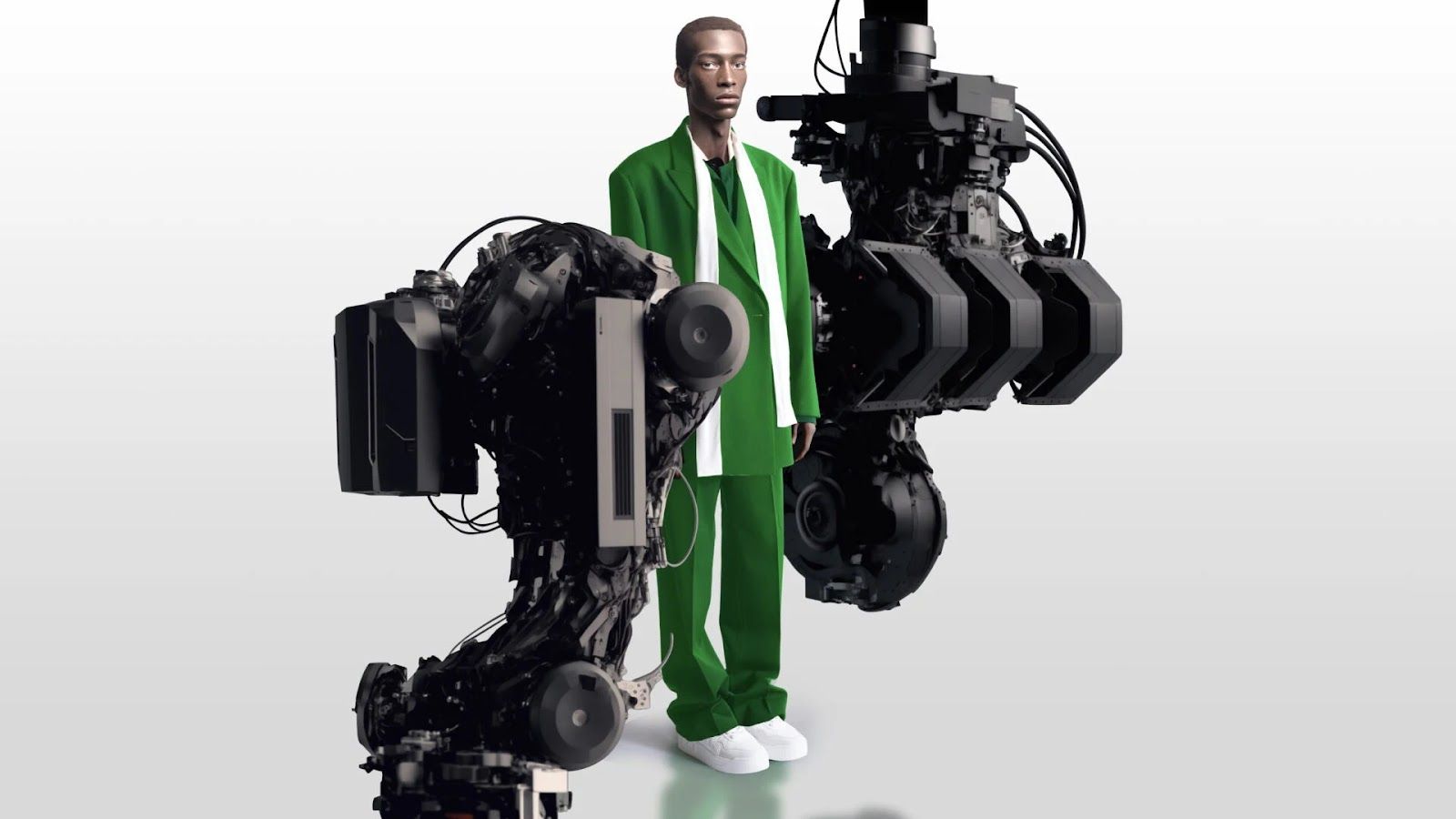
Moncler teamed up with Maison Meta for an AI-powered campaign during London Fashion Week of 2023, releasing machine-generated images.

G-Star Raw released its first denim couture piece designed using AI technology in March 2023, showcasing the potential of AI in fashion design.
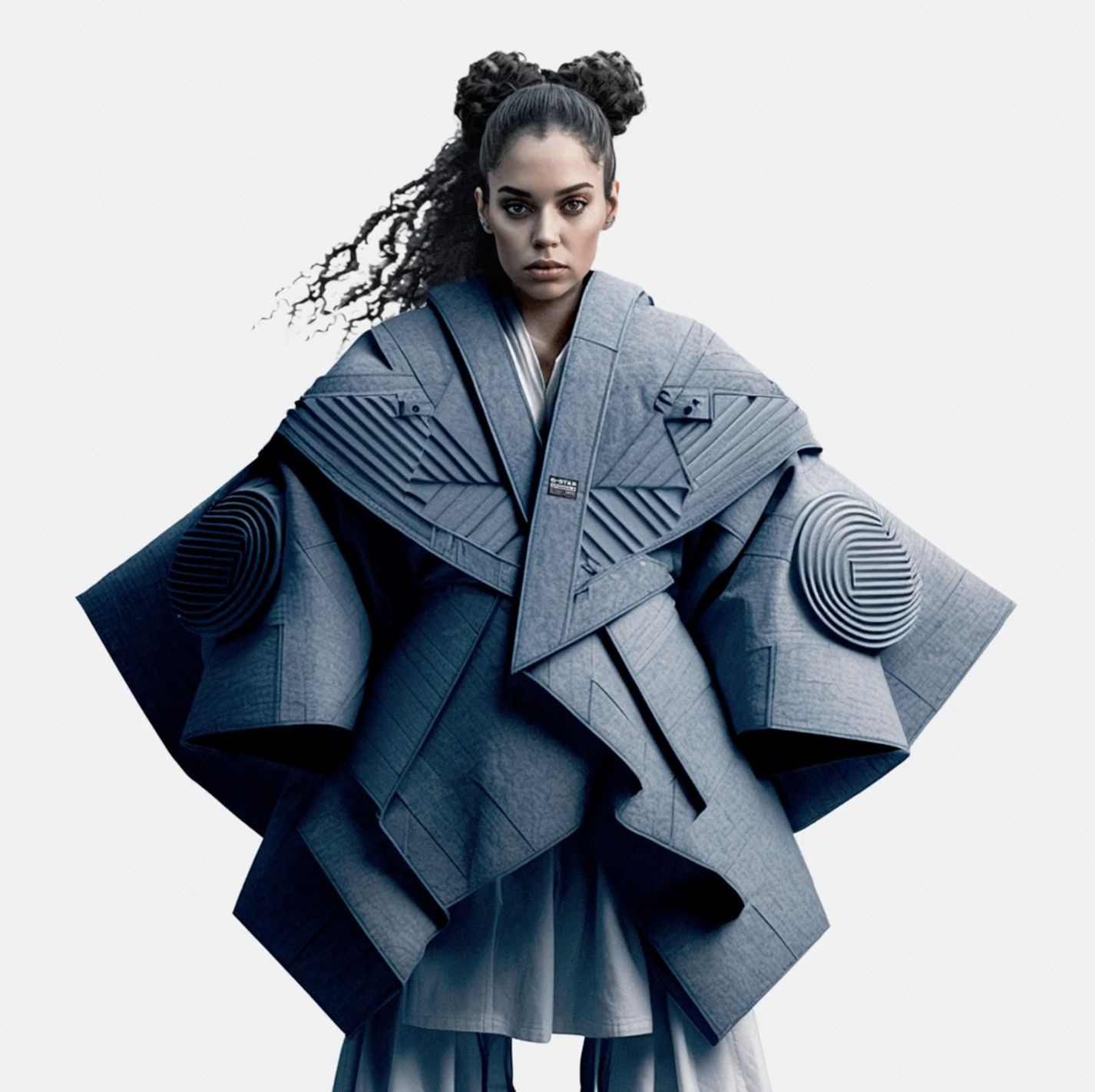
Future Trends in AI for Fashion Design
A rapidly evolving relationship between fashion design and Artificial Intelligence points toward multiple serious developments that are likely to reshape the entire fashion industry in the next several years. These trends are more than incremental improvements – they represent drastic shifts in the way fashion is created, distributed, and even experienced.
Completely Personalized AI Design Solutions
The growing complexity of generative design algorithms would be able to create truly one-of-a-kind fashion experiences, with AI co-creating unique fashion elements for individual consumers based on their needs, preferences, and body measurements. Such a hyper-personalized approach would extend well beyond mere size adjustments to modifiable design elements, transforming fashion from a mass-production model to an era of algorithmic clothing that can combine personal expression with technological precision.
The Rise of Digital Fashion and AI
Virtual garments that are designed specifically for digital environments may become a completely new category as consumers invest in dressing their digital avatars in various virtual workspaces, gaming platforms, and even social media resources. Such digital creations would be completely unbounded by physical manufacturing constraints, pushing the boundaries of what is possible in the field of design while also opening up entirely new revenue streams for fashion brands that are not afraid to embrace non-physical product lines.
Supply Chain Optimization for Fashion with the Help of AI
Artificial Intelligence is sure to completely revolutionize fashion logistics via autonomous systems that recalibrate product quantities, distribution pathways, and inventory placement on a continuous basis according to a variety of real-time signals. Such intelligent supply chains should progressively eliminate a lot of the inefficiencies of the traditional fashion industry – cross-continental shipping redundancies, seasonal overproduction, and others, creating a much more agile business environment that operates with outstanding efficiency.
Social Media Strategy Restructuring with AI
AI-powered tools may also transform fashion marketing through generating brand-consistent visual content tailored to specific audience segments and platforms with barely any human intervention. These systems would be able to analyze engagement patterns across multiple social channels in real time, identifying which design elements resonate better with different demographics to create a continuous feedback loop between creative direction and consumer response to create future collections.
To Sum Up
From instant visualisation with NewArc.ai to market insights with Heuritech, these AI solutions are designed to enhance your creativity, protect your originality, and ensure your designs resonate with your audience. Consider these AI tools not as replacements for your work, but as powerful allies that amplify your abilities and bring your imaginative concepts to life.
The true potential of AI in fashion design emerges when such tools are used in a strategic manner to address various stages of the creative and production processes. A designer might begin with Khroma as the means of developing a cohesive color story while using NewArc.ai to have a quick visualization of initial concepts and transforming sketches into photorealistic images. Market viability can be validated with the help of Heuritech, while Clo3D can be used to refine the designs before achieving technical accuracy.
Different business models should also have preferences when it comes to specific AI implementation strategies. For example, independent designers should have a higher luck using NewArc.ai or Khroma, while established brands with larger resource pools might use Style 3D or Browzwear instead, with Revery.ai reducing the e-commerce return rates with virtual try-ons.
The most forward-thinking businesses already create integrated AI ecosystems by connecting different tools with each other. These tools are not just about efficiency, either – they enable completely new business models and creative possibilities that were previously completely impossible in the first place. Brick-and-mortar retailers, for example, can use virtual try-ons in order to bridge the gap between in-store experiences and online browsing.
To kick-off or continue exploring your journey in mastering AI, play around with NewArc.ai sketch-to-image generation – it’s free to try!
Frequently Asked Questions
How does AI impact the creativity of fashion designers?
AI can enhance creativity through eliminating routine tasks while enabling rapid prototyping that would have usually been a lot more time-consuming. Instead of replacing human creativity, AI tools attempt to serve as collaborative partners that expand the possibilities, allowing designers to focus more on concepts and their refinement instead. The most successful AI implementations amplify a designer’s unique vision instead of attempting to homogenize the original style. For example, NewArc’s sketch-to-image capabilities greatly simplify rapid prototyping and ideation processes, leaving more time to work on finer details or exploring different creative options.
Are AI tools suitable for small or independent fashion brands?
A respectable selection of AI design tools can be accessed either for free or for a very generous basic fee, making them viable for small brands and even independent designers. Services like NewArc can provide basic sketch-to-image capabilities for occasional use at about $19 a month. The key here is to select specialized tools that can address specific pain points instead of investing in complex (and expensive) enterprise platforms from the get-go.

